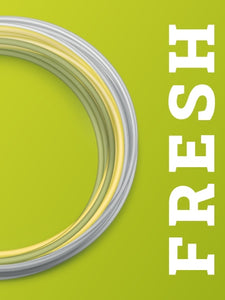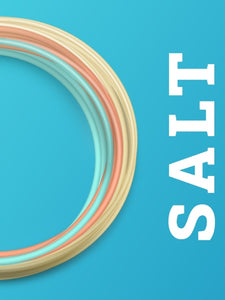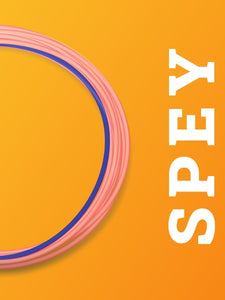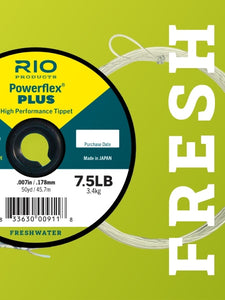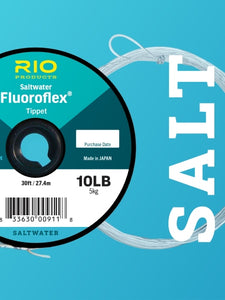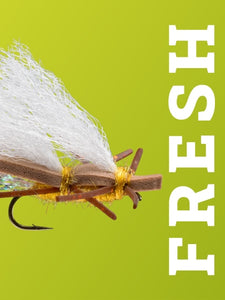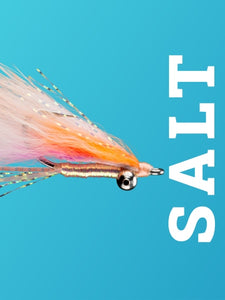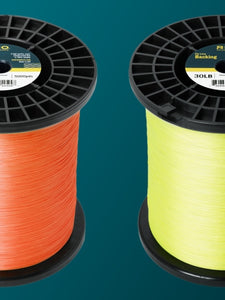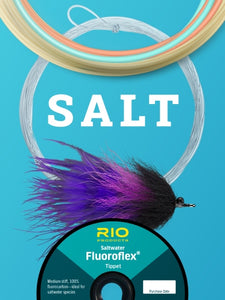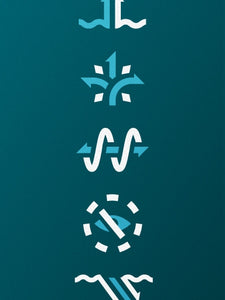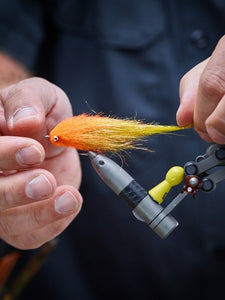
Tips & Tricks
Fly Recommendations | Top Runoff Season Patterns from RIO's Fly Designer Patrick Kilby
Patrick Kilby April 21, 2025
Runoff is inevitable, but when and for how long and how much is something that can vary wildly from year to year. Considering that uncertainty, I find that lakes during runoff provide the most consistent conditions and that’s typically where I end up. But after a long winter, the pull of moving water is often too strong to ignore and I find myself headed to the river, high water be damned. During high flows, I prefer to stick to the bank and often avoid wading altogether. It’s not only more difficult to see and find good footing during runoff, but the fish hold much tighter to the bank.
If you too have the itch for some walk-in spring runoff river fishing, here are a few of my favorite patterns and techniques.

Chubby Chernobyl, Black Size 6
Most of my runoff fish are caught on a nymph, but I prefer to fish dry-droppers rather than indicator rigs. My dry of choice is a black #6 Chubby Chernobyl, but a good alternative is any Chubby with the black foam deck. These offer a great silhouette against the sky, even under dark cloud cover. The big size not only supports heavy dropper flies, but often entices fish to feed off the surface as adult stoneflies are beginning to appear on the spring menu.

Sili-Leg Stone TB, Black Size 10
When a stonefly is ready to emerge into a flying adult, the nymph makes its way to the river’s edge and crawls out toward dry land. This means these big meals are in very close proximity to the bank, shuffling though the shallows. The first nymph I hang off the dry is usually a #10 tungsten bead Sili-Leg Stone in black – a super-versatile stonefly pattern with knotted legs that just dance in the water.

Prince Nymph Jig TB, Peacock Size 12
If I need to go smaller when the fish may be on green drake nymphs or caddis larvae, I like the #12 Tungsten Prince Nymph Jig. This has white wings that contrast against a dark body. The #12 has a 3.3mm tungsten bead which drops into pockets quickly, especially when set up with a tuck cast. The highly reflective gold bead throws back the most light and can be a difference-maker in off-colored water conditions. And because the softer water on the inside edges are usually littered with sticks, its jig head minimizes snags.

RIO's Worm Farm TB, Red Size 12
If my patterns above aren’t getting it done, I go there. Yes, I tie on a worm. While many anglers fish a classic squirmy worm with a black tungsten bead mid-shank, I prefer RIO's Worm Farm #12 in red. It has the same squirmy material but boasts a larger tungsten bead and a jig head that avoids hang-ups.

RIO's Sir Sticks A Lot, Brown Size 4
When I want to switch it up, I fish a big, dark-colored streamer like a #4 RIO’s Sir Sticks A Lot on or near the bottom. This can represent cranefly larvae or leeches, and in some cases, crawdads or sculpin. I usually fish my Redington Strike euro rod with a long leader for this technique. I start with an upstream cast near the bank where the water is at least 12” deep and is moving slower than the main current. I let it reach the bottom then I slowly hop it downstream with constant tension or I carefully probe around woody debris and swim it back to me with small twitches.
